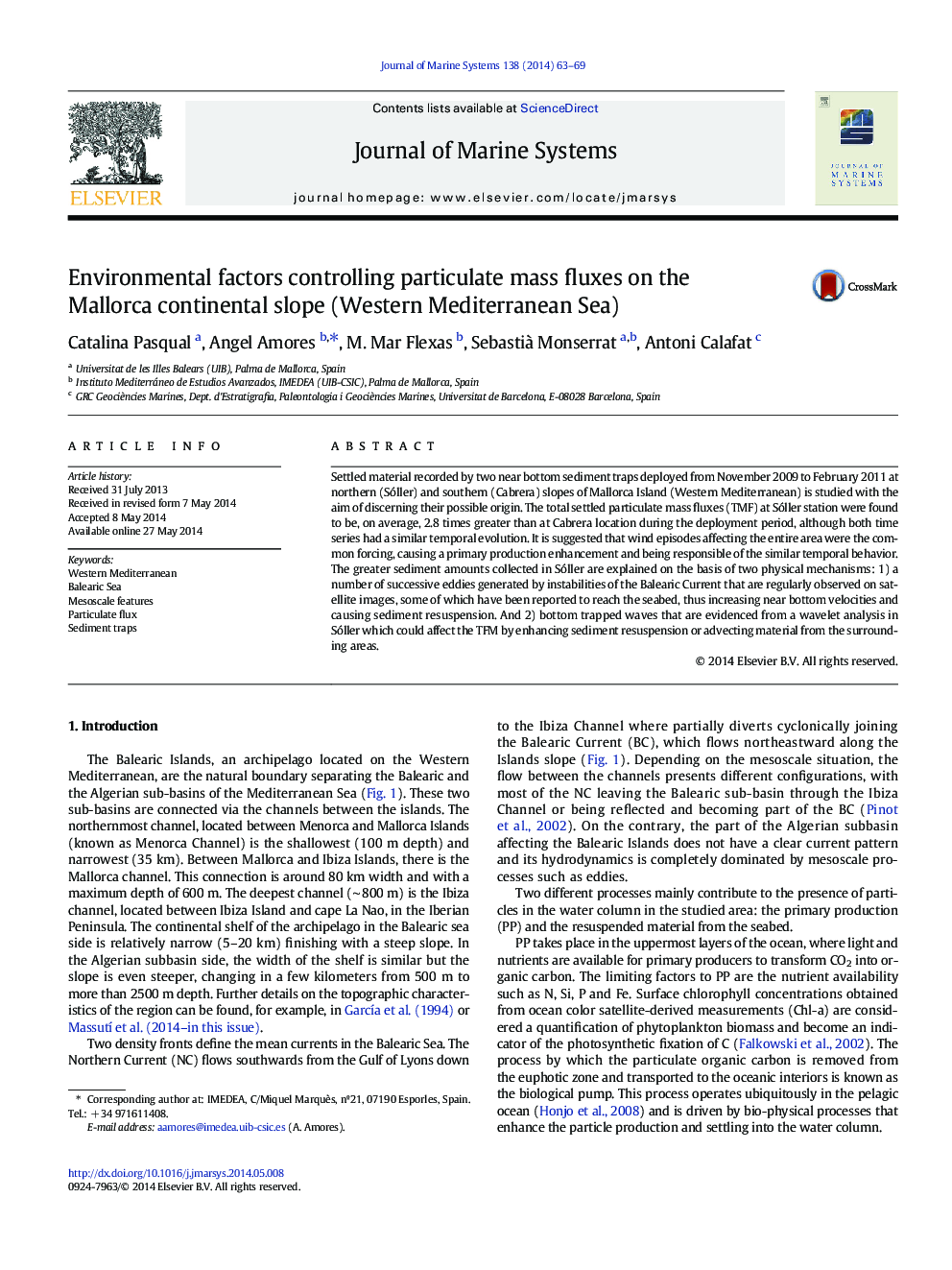| Article ID | Journal | Published Year | Pages | File Type |
|---|---|---|---|---|
| 4547999 | Journal of Marine Systems | 2014 | 7 Pages |
•The mechanisms controlling TMF at North and South of Mallorca are studied.•Wind is found to be a common forcing modulating TFM time series by enhancing PP.•Biogenic components were similar at both sites but lithogenic was larger at the north.•The north is hydrodynamically more active, with eddies and bottom trapped waves.•These structures may cause resuspensions explaining the observed differences.
Settled material recorded by two near bottom sediment traps deployed from November 2009 to February 2011 at northern (Sóller) and southern (Cabrera) slopes of Mallorca Island (Western Mediterranean) is studied with the aim of discerning their possible origin. The total settled particulate mass fluxes (TMF) at Sóller station were found to be, on average, 2.8 times greater than at Cabrera location during the deployment period, although both time series had a similar temporal evolution. It is suggested that wind episodes affecting the entire area were the common forcing, causing a primary production enhancement and being responsible of the similar temporal behavior. The greater sediment amounts collected in Sóller are explained on the basis of two physical mechanisms: 1) a number of successive eddies generated by instabilities of the Balearic Current that are regularly observed on satellite images, some of which have been reported to reach the seabed, thus increasing near bottom velocities and causing sediment resuspension. And 2) bottom trapped waves that are evidenced from a wavelet analysis in Sóller which could affect the TFM by enhancing sediment resuspension or advecting material from the surrounding areas.
